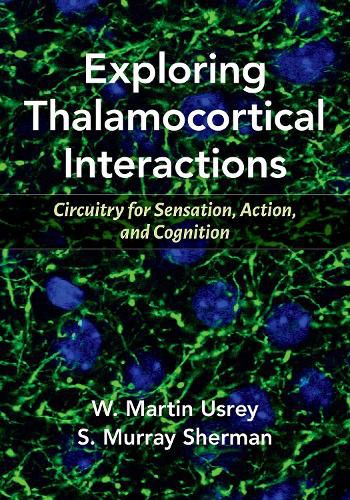Readings Newsletter
Become a Readings Member to make your shopping experience even easier.
Sign in or sign up for free!
You’re not far away from qualifying for FREE standard shipping within Australia
You’ve qualified for FREE standard shipping within Australia
The cart is loading…






Every cortical area receives input from the thalamus and projects to the thalamus. The cortex and thalamus, therefore, are inseparable partners for sensation, action, and cognition. Exploring Thalamocortical Interactions provides readers with foundational knowledge needed to understand the cellular and circuit properties of thalamocortical networks, and then goes on to consider new ideas and hypotheses, some of which are quite speculative.
Some of the major themes emphasized throughout the book include:
* the need for a proper classification of thalamocortical and corticothalamic circuits * the role of spike timing for thalamocortical and corticothalamic communication and the mechanisms for modulating spike timing * the organization and function of corticothalamic feedback projections * the role of higher order thalamic nuclei in cortico-cortical communication and cortical functioning * attentional modulation of thalamocortical interactions * a rethinking of efference copies and distinguishing neural signals as sensory versus motor
Exploring Thalamocortical Interactions combines foundational knowledge from decades of research with fresh ideas and hypotheses on how the thalamus and cortex work together for sensation, action, and cognition.
$9.00 standard shipping within Australia
FREE standard shipping within Australia for orders over $100.00
Express & International shipping calculated at checkout
Every cortical area receives input from the thalamus and projects to the thalamus. The cortex and thalamus, therefore, are inseparable partners for sensation, action, and cognition. Exploring Thalamocortical Interactions provides readers with foundational knowledge needed to understand the cellular and circuit properties of thalamocortical networks, and then goes on to consider new ideas and hypotheses, some of which are quite speculative.
Some of the major themes emphasized throughout the book include:
* the need for a proper classification of thalamocortical and corticothalamic circuits * the role of spike timing for thalamocortical and corticothalamic communication and the mechanisms for modulating spike timing * the organization and function of corticothalamic feedback projections * the role of higher order thalamic nuclei in cortico-cortical communication and cortical functioning * attentional modulation of thalamocortical interactions * a rethinking of efference copies and distinguishing neural signals as sensory versus motor
Exploring Thalamocortical Interactions combines foundational knowledge from decades of research with fresh ideas and hypotheses on how the thalamus and cortex work together for sensation, action, and cognition.